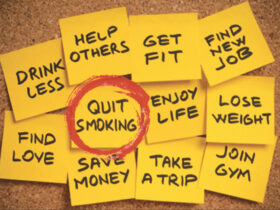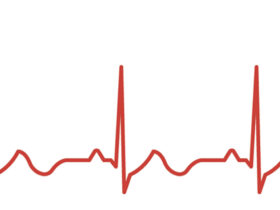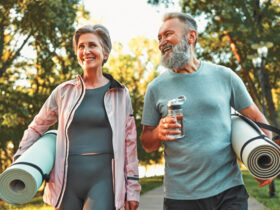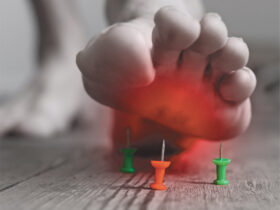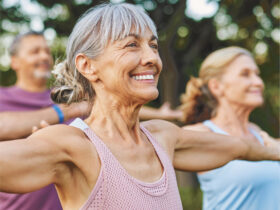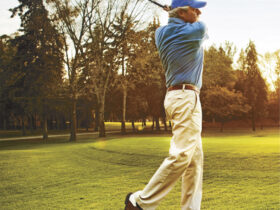 Recognized as one of the fastest growing sports in the United States, pickleball is a fun-filled way to stay competitive and active at any age. Like any sport, there are risks involved and injuries can and do occur, especially if preventative measures are not taken. Pickleball can be strenuous on the joints and the most common injuries include Achilles tendinitis, calf strain or tennis leg, plantar fasciitis, and lateral epicondylitis or tennis elbow. “These types of injuries are more common in new or less conditioned players,” says Board Certified Orthopaedic Surgeon at Physicians Regional Medical Group, Dr. Christina Kabbash. “It is easy to overdo it, stressing tendons around the ankle, knee, wrist and elbow joints that have not been used in a while.”
Recognized as one of the fastest growing sports in the United States, pickleball is a fun-filled way to stay competitive and active at any age. Like any sport, there are risks involved and injuries can and do occur, especially if preventative measures are not taken. Pickleball can be strenuous on the joints and the most common injuries include Achilles tendinitis, calf strain or tennis leg, plantar fasciitis, and lateral epicondylitis or tennis elbow. “These types of injuries are more common in new or less conditioned players,” says Board Certified Orthopaedic Surgeon at Physicians Regional Medical Group, Dr. Christina Kabbash. “It is easy to overdo it, stressing tendons around the ankle, knee, wrist and elbow joints that have not been used in a while.”
Pickleball is a sport that combines tennis, badminton, and ping pong, and is played on an indoor or outdoor court measuring 20×44 feet, with the net hung at 36 inches on the ends. It can be played with either two or four players using paddles and a plastic ball with holes. Lending to its popularity, pickleball is a great aerobic workout, easy to learn, and can be enjoyed by people of all ages. In fact, 75% of the core participants playing pickleball are over the age of 55, according to the USAPA (USA Pickleball Association).
Dr. Kabbash recognizes that sports injuries, including those in pickleball do not discriminate among age, but certain susceptibility factors do play a role among older players. “Older players will be more likely to have accumulated wear and tear over time creating increased susceptibility to injury at the weak points or nagging injuries that keep recurring,” says Dr. Kabbash. She also points out that age-related decreases in strength and flexibility increase risk of injury coupled with decreases in levels of growth hormone and testosterone, increasing the amount of time it takes to heal.
The good news is there are many protection and prevention strategies that can greatly decrease the risk of injury and allow players at any age to enjoy the sport for years to come.
Dr. Kabbash offers the following advice:
1) Play Within Your Limits. It is easy to let the competitive juices start flowing and lunge for shots you have no business lunging for. Recognize your capabilities and allow for experience, strength, and flexibility to develop.
2) Do balance and core exercises. Pickleball involves extensive side to side and backward motions requiring neuromuscular training. This can be honed with balance and core exercises decreasing the risk of trips and falls, especially as we get older.
3) Wear court shoes. Running shoes are engineered for front to back, rolling heel to toe motion, heel cushioning, and good traction which is not conducive to the sport. Court shoes are engineered for side to side, lateral motion, with smoother soles less likely to “catch an edge” when side shuffling and sliding for a shot.
4) Warm up prior to playing. Warming up involves dynamic exercises to get the blood flowing to the muscles and tendons, and gets the joints moving smoothly. Dynamic warm ups can consist of brisk walking or biking to the pickleball court, and/or five to ten minutes of knee lifts, arm circles, lunges, touching the toes and walking the hands out into plank position and then back.
5) Do static stretching exercises. These can be performed AFTER a dynamic warm up to avoid overstretching injury to “cold” muscles and tendons.
6) Allow for proper resting. Muscles and tendons in the body need to rebuild and strengthen after exercise. Stress and overuse injuries occur when you play daily and do not allow for adequate time to rebuild.
Dr. Kabbash is an elite athlete who has competed in many triathlons, and is very familiar with the physical demands that sports can play. “Unfortunately, my athletic background has given me the ability to commiserate with my athletic patients as I have experienced many of the common injuries. It has also given me insight on how to stay active despite injuries, allowing a quicker return to play and sometimes overall improvement due to cross training.” Dr. Kabbash emphasizes the importance of rest and following the RICE (Rest, Ice, Compression, Elevation) protocol for the first 48-72 hours following an injury. Icing should be cycles of 20 minutes on and 20 minutes off and never placed on bare skin. Compression can be an ACE bandage or compression sleeve or brace. It is ideal to elevate the affected limb higher than the heart to drain the swelling. If the injury affects the ability to bear weight or does not improve in 48 hours, see a medical professional.
“I really enjoy pickleball and feel that it is a great sport for people who are new to racket sports, and for those who have accumulated wear and tear,” says Dr. Kabbash. The dynamics of the game can mean less stress on joints, however, as with any sport there are risks involved and proper precautions should be taken.”
Dr. Kabbash is Board Certified in Orthopaedic Surgery, and Fellowship Trained in Orthopaedic Foot and Ankle trauma and reconstruction. Her services include treatment for hammer toe and bunion reconstruction, sprains or fractures of every foot and ankle joint, tendon ruptures and injuries including Achilles tendon, foot and ankle post-traumatic arthritis, including total ankle replacements.
Dr. Kabbash’s office is located at Physicians Regional – Pine Ridge Medical Office Building, at 6376 Pine Ridge Rd, Naples, FL 34119.
For more information, or to schedule an appointment, please call (239) 348-4221 or visit PhysiciansRegionalMedicalGroup.com.
Physicians Regional – Pine Ridge Medical Office Building
6376 Pine Ridge Rd, Naples, FL 34119
PhysiciansRegionalMedicalGroup.com
(239) 348-4221



